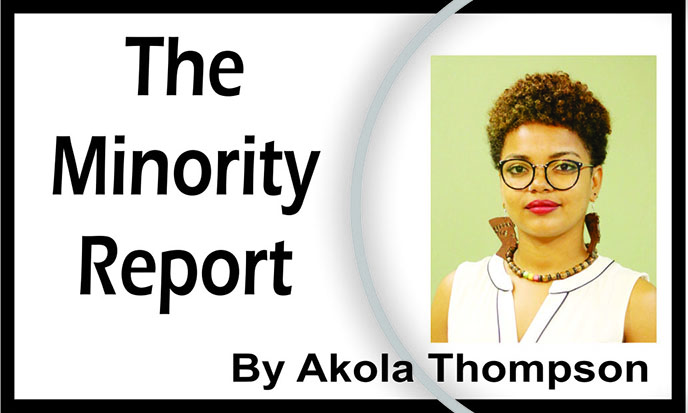Hair, while it is a conversation that has been raging for quite some time now amongst the Black community, recently, it took on a national tone after the Ministry of Education (MoE) indicated that girls would be allowed to wear their hair without restriction for International Women’s Day (IWD). This move demonstrated that the MoE was very aware that the hair rules were inherently biased and should be done away with. However, as is often the case with optical IWD observances, it fell short of implementing the measures that were needed to ensure that discriminatory hair rules did not continue to exist past that twenty-four hour period. Rightly, this brief grace period was met with pushback as many pointed out that there were simply no good reasons for these rules, which overwhelmingly affect students who are Black or mixed, to have existed in the first place.
In response to the feedback, Minister of Education, Priya Manickchand in an interview said that it was in fact her intention to start this dialogue and that she was responsible for starting such a conversation in Guyana. This was quite an amusing thing to observe, as it was very apparent that the Ministry did not expect the heavy pushback they received on it. For them, it was mainly an optical half-measure that would contribute towards the tradition of empty acts that lead to no tangible changes. Another reason it was found amusing was because the Minister said this in the presence of two Black women, one of whom is largely responsible for highlighting and celebrating natural hair in Guyana through Curl Fête. It is good that the Minister is now becoming aware of the impacts that this policy has had and continues to have on Black children, particularly Black girls but unfortunately, it does not appear that she truly fully grasps the gravity of discriminatory policies such as these, and their historical and current ramifications.
A lot of the feedback on the removal of these rules from schools has also been negative. Primarily, we see persons advocating for hairstyles that are “neat and tidy,” a euphemism that many young Black girls have come to recognize means that their natural hair must be relaxed, hidden or slicked down. It is not surprising that a lot of persons against this are those who are not Black and that is quite simply because they do not understand the challenges of Black hair and also benefit from a system which has consistently stigmatized hair that is not straight or appropriately curled. It has long been my belief that if an issue does not affect the demographic that you are from, then it would serve everyone well for you to be quiet if it is that you are not offering support to groups impacted by certain laws, policies and behaviours. Of course, there are persons of African descent who have internalized anti-Black sentiments and are against removing the hair rules, as they believe they are necessary for maintaining law and order. This equation with hair to character and/or behaviour is a belief that is incredibly dangerous and dehumanizing. Beliefs such as these are behind why Rastafarians were and continue to be targeted. It is also behind why despite progress due to public education and popular culture, that traditionally Black hairstyles such as cornrows, box braids and afros continue to be seen as indicative of criminality or at the very least, have negative connotations.
While the MoE is currently seeking feedback from parents and educators and whichever other group they think should have a say, the reality is that this is simply not a complex matter requiring extended consultations. An examination of the hair rules in schools will demonstrate that the main demographic it targets are children of African descent due to colonial era holdovers Guyana refuses to part ways with. While young men are not primarily targets, they also face the repercussions of the hair mandate. Boys are often not allowed to grow their hair and are steadily prompted to cut it. The restrictions with girls are even more. They are not allowed to wear hairstyles that their classmates who rock straight hair would be able to. This demonstrates that the hair rules are not about hairstyles, but primarily about hair textures, primarily afro-textured hair, and this is discriminatory. Recognizing that we are not removed from our history of colonialism which places barriers in the way of children existing as they naturally are will help in seeing the need to stop pressuring them to conform to ideals that are not based in their reality. Our society is evolving and we must evolve with it, particularly when it comes to things that have a foundation in discrimination.
“Breaking the bias happens when the Ministry completely does away with the hair policy. It comes with recognising the history of bias and discrimination which the hair policy represents, and teaching about resistance to that discrimination.” – Memorandum to Ministry of Education, “Liberate your hair, Liberate your minds” by Thandeka Percival, Salima Hinds and Vidyaratha Kissoon.






